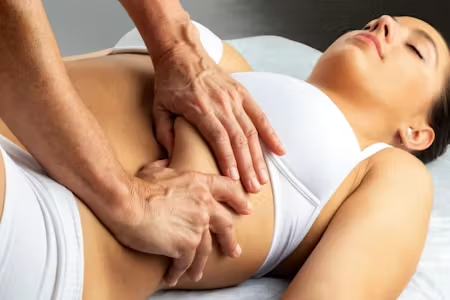Visceral Manipulation Therapy
Visceral manipulation is an osteopathic technique that aims at the restoration of proper mobility and positioning of the organs.
If you are looking to improve digestion, circulation or straighten your posture, this approach may be the one to apply.
Visceral manipulation therapy helps ensure that each organ has adequate mobility or space in which to perform its functions. The therapist relies on his refined sense of palpitation to make sure no organ is impeding any major vessels or nerves in the area, and that it has its own sense of mobility.
Many times, the primary source of physical pain is in faulty position or movement of an organ.
Through visceral normalization, osteopathic practitioner can influence the structure of the organ, alleviate this dysfunction and restore the body to its optimal functioning.
Most people can benefit from visceral manipulation.
Visceral Manipulation involves mobilizing the fascia specific to organs, operating on the principle that unrestricted movement within the body is crucial for maintaining health.
It assesses and addresses the movement dynamics and support of organs, membranes, fascia, and ligaments.
Visceral manipulation may help you manage symptoms of the following conditions:
- Bloating and Constipation.
- Chest or Abdominal Sports Injuries.
- Chronic Pelvic Pain.
- Fibroids and Cysts.
- Post-infection Scar Tissue.
- Infant Colic
What to expect on your first visit.
What to expect from visceral manipulation
Call Annex Osteopathy today (416) 550-0143 to book appointment.

